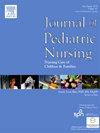Call for action: Adverse drug events and level of harm in hospitalized pediatric patients in Palestine: A retrospective cohort study
IF 2.3
4区 医学
Q2 NURSING
Journal of Pediatric Nursing-Nursing Care of Children & Families
Pub Date : 2025-07-11
DOI:10.1016/j.pedn.2025.07.004
引用次数: 0
Abstract
Background
Adverse drug events (ADEs) are a significant cause of preventable harm among hospitalized pediatric patients. However, data on ADEs in Palestine remain limited.
Objective
This study aimed to determine the incidence, types, and severity of ADEs among hospitalized children in Palestine and to identify associated risk factors.
Methods
A retrospective cohort study was conducted across six hospitals in the West Bank. Medical records of 600 pediatric inpatients (aged <15 years) hospitalized for at least 48 h were reviewed using the Institute for Healthcare Improvement (IHI) Global Trigger Tool (GTT) adapted for pediatrics. ADEs were identified and categorized by severity using the National Coordinating Council for Medication Error Reporting and Prevention (NCC MERP) Index, and they were analyzed in relation to patient demographics and hospital characteristics.
Results
A total of 155 ADEs were detected, with an overall incidence of 65.2 per 1000 patient-days and 67.0 per 1000 medication doses. The most common triggers were rash, anti-allergic medication use, and abrupt cessation of medication. Most ADEs (72.3 %) caused temporary harm requiring intervention (Category E), while 25.6 % resulted in prolonged hospitalization (Category F). Risk factors significantly associated with ADE occurrence included older age, private hospital admission, longer hospital stay, and regional differences.
Conclusions
The incidence of ADEs in Palestinian pediatric inpatients is higher than previously reported internationally, underscoring the need to enhanced patient safety measures. Implementing standardized monitoring tools like the GTT can support early ADE detection and improve the quality of pediatric care.
行动呼吁:巴勒斯坦住院儿科患者的药物不良事件和危害程度:一项回顾性队列研究
背景:药物不良事件(ADEs)是住院儿科患者可预防伤害的重要原因。然而,关于巴勒斯坦境内ADEs的数据仍然有限。目的本研究旨在确定巴勒斯坦住院儿童ADEs的发生率、类型和严重程度,并确定相关的危险因素。方法在西岸6家医院进行回顾性队列研究。使用适用于儿科的医疗保健改善研究所(IHI)全球触发工具(GTT)对600名住院至少48小时的儿科住院患者(15岁)的医疗记录进行了审查。使用国家药物错误报告和预防协调委员会(NCC MERP)指数根据严重程度对ade进行识别和分类,并与患者人口统计学和医院特征进行分析。结果共检出ade 155例,总发生率为65.2 / 1000患者日,总发生率为67.0 / 1000用药剂量。最常见的诱因是皮疹、抗过敏药物的使用和药物的突然停止。大多数ade(72.3%)造成需要干预的暂时性伤害(E类),而25.6%导致长期住院(F类)。与ADE发生显著相关的危险因素包括年龄较大、私立医院住院、住院时间较长和地区差异。结论巴勒斯坦儿科住院患者的ade发生率高于此前国际上报道的发生率,强调了加强患者安全措施的必要性。实施像GTT这样的标准化监测工具可以支持早期发现ADE并提高儿科护理质量。
本文章由计算机程序翻译,如有差异,请以英文原文为准。
求助全文
约1分钟内获得全文
求助全文
来源期刊

Journal of Pediatric Nursing-Nursing Care of Children & Families
NURSING-PEDIATRICS
CiteScore
3.70
自引率
8.30%
发文量
291
审稿时长
65 days
期刊介绍:
Official Journal of the Society of Pediatric Nurses and the Pediatric Endocrinology Nursing Society (PENS)
The Journal of Pediatric Nursing: Nursing Care of Children and Families (JPN) is interested in publishing evidence-based practice, quality improvement, theory, and research papers on a variety of topics from US and international authors. JPN is the official journal of the Society of Pediatric Nurses and the Pediatric Endocrinology Nursing Society. Cecily L. Betz, PhD, RN, FAAN is the Founder and Editor in Chief.
Journal content covers the life span from birth to adolescence. Submissions should be pertinent to the nursing care needs of healthy and ill infants, children, and adolescents, addressing their biopsychosocial needs. JPN also features the following regular columns for which authors may submit brief papers: Hot Topics and Technology.
 求助内容:
求助内容: 应助结果提醒方式:
应助结果提醒方式:


